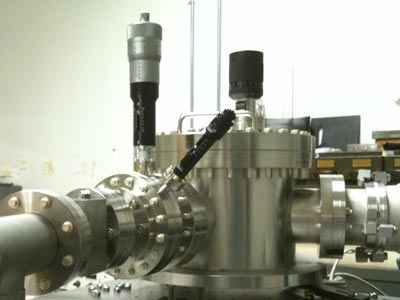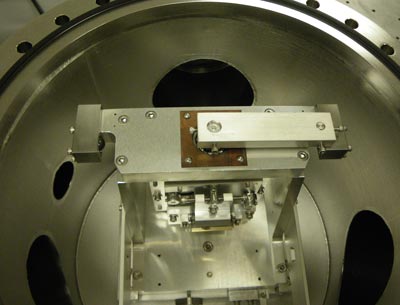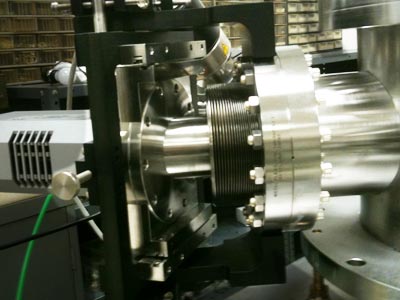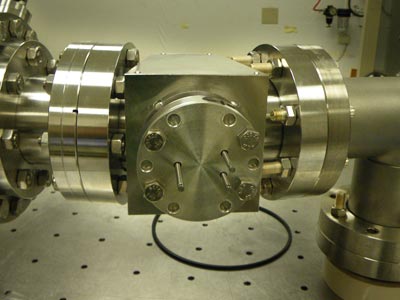
Flat Field Spectrograph
Vacuum ultraviolet spectrograph collects a wide wavelength range in one acquisition. Three different diffraction gratings are available for work from about 10nm to 160nm. Each offers different spectral resolution and spectral range; they work in the soft x-ray (SXR, XUV), extreme ultraviolet (EUV), and VUV. This is a practical instrument for applications requiring rapid data collection from transient, short lived events. Examples include fusion plasmas formed in tokamak devices, laser ablation, liquid droplet EUVL sources, and Xenon plasma at 13.5nm considered for extreme ultraviolet lithography.
The flat field toroidal grating instruments works over a fixed wavelength range. The prescription of the toroid and aberration correction determines the optimum region of use. Due to intensive design and difficult optical fabrication selection of gratings is limited. If there is a grating available for your wavelength of interest, you are in luck! These instruments exhibit relatively simple opto-mechanical systems that deliver good imaging and fair spectral resolution. They also allow use of a direct detection CCD to acquire high-energy spectra. Fragile microchannel plate (MCP) intensifiers can be reserved for those systems requiring gating.
| Optical Design | Toroidal Grating Flat Field Spectrograph |
| Angle of Incidence | ~71 degrees |
| Focal Length | 292.1 mm |
| Acceptance | 24 mrad |
| Wavelength Range | refer to grating of interest for range |
| Grating(s) | Single, kinematic grating holder. Two grating turret optional. |
| Slit | Continuously variable micrometer actuated width 0.01 to 1 mm. Settable height. |
| Vacuum | Ultra High Vacuum 10E-9 torr standard |
| Focal Plane | 40 mm microchannel plate or 25 mm direct detection CCD |
| Grating Groove Density (g/mm) | 2105 | 450 | 290 |
| Spectral Resolution (nm,FWHM) | 0.05 | 0.1 | 0.16 |
| Focal Plane Width (mm) | 40 | 40 | 40 |
| Wavelength Range (nm) | 9.5 to 32 | 10 to 110 | 15.5 to 170 |
| Energy Range (eV) | 130 to 39 | 124 to 11 | 80 to 7 |




Flat field aberration corrected toroidal grating spectrometer fills a 40mm focal plane ideal for microchannel plate intensifiers. Compact and versatile most are in use in tokamak plasma research, some now for high harmonic generation and attosecond laser physics. Versions exist with dual and triple grating turrets, back-to-back diffraction gratings for simultaneous, dual-range monitoring, rocking mechanisms to scan large plasma sections and more.
For a general purpose laboratory instrument, greater flexibility, or astrophysics instrument calibration (for example) consider the Rowland circle design grazing incidence system Model 248/310G. It provides most flexibility with respect to wavelength range. Many grating choices are available and it delivers excellent spectral resolution.
Call to discuss the deatils of your application today.
This spectra was collected with the Model 251 toroidal aberration corrected flat field grating on direct detection CCD. Source used was ionized gas hollow cathode and deuterium lamp with magnesium fluride window.
Call 1-978-256-4512 to discuss your application today.